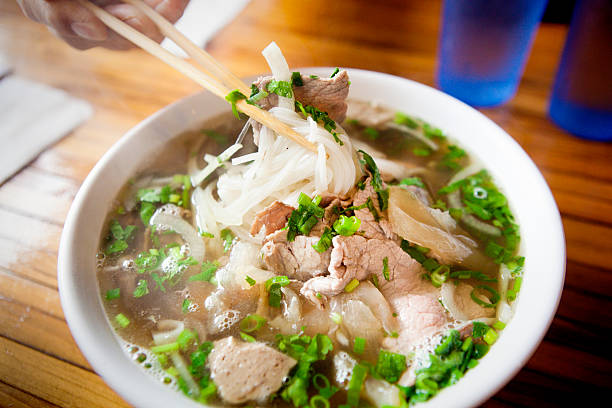Discovering the Delights of Vietnamese Pho: A Culinary Adventure
Vietnamese Pho, a traditional noodle soup, has been making waves across the globe. But do you know what really goes into a bowl of Pho, and how can you make it at home? Let's embark on this culinary adventure to demystify this dish and bring its enchanting flavors into your kitchen.

The Story of Pho
Pho is more than just a dish for Vietnamese people; it’s a part of their identity. Its history can be traced back to the early 20th century in northern Vietnam. Pho integrates local ingredients and the culinary techniques of the French, who colonized Vietnam. What sets Pho apart is its broth, meticulously simmered for hours with beef bones and a blend of aromatic spices.
The Anatomy of a Pho Bowl
A bowl of Pho is a symphony of flavors and textures. At its heart is the broth, rich and flavorful yet clear. Flat rice noodles provide a satisfying chewiness while thin slices of beef or chicken add a protein punch. Garnishing with fresh herbs, bean sprouts, lime wedges, and chili slices enhances the dish’s complexity, making every bite a delightful experience.
Making Pho at Home: A Step-by-Step Guide
Making Pho at home may seem daunting, but with time and patience, you can master the art. Start by simmering beef bones to make the broth. Roasting ginger and onions adds depth to its flavor. The key is to let it simmer for at least 12 hours. The longer it cooks, the more flavorful it becomes.
The Perfect Pho Spices
The secret to a good Pho lies in its blend of spices. Star anise, cloves, cinnamon, cardamom, and coriander seeds create an aromatic concoction that infuses the broth with its signature scent and taste. Toast these spices lightly before adding them to the broth to release their full flavor potential.
Pho: A Healthy Delight
Pho’s nutritional value is as impressive as its taste. It’s low in fat and high in protein, making it a perfect meal for health-conscious individuals. The herbs used in Pho are packed with antioxidants, while the broth is a rich source of minerals.
- A bowl of Pho is typically under 400 calories.
- Pho is high in Vitamin C, thanks to the fresh herbs and lime.
- It’s a good source of zinc and iron, due to the beef.
- Pho can be made gluten-free by using tamari instead of soy sauce.
Conclusion
Pho is more than just a bowl of noodle soup; it’s a testament to Vietnam’s rich history and culinary prowess. By understanding its components and the intricacies involved in its preparation, you can savor Pho in a new light. So why not embark on this culinary adventure and discover the delights of this Vietnamese treat?




